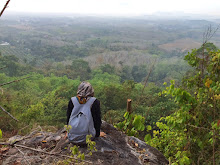Children are immersed in technologically rich environments, both in their homes and in the local environment; there are remote controls for television and video sets, toys that have buttons and buzzers, phones and mobile phones, washing machines, microwaves and other machines that require programming, computers, photocopiers, answer phones, security keypads for entry, automatic doors, ticket machines, cash machines, bar-code scanners, digital tills and weighing machines, security cameras, the list can go on and on.
Try taking an ICT walk with children identifying ICT and related uses in their environments such as street lights, signals, automatic doors, ticket machines. It can be quite an eye-opener and can lead to setting up outdoor role-play areas, such as car parks, back at their setting. For example, my mum always ask me to check in her flight using my smartphone.
In the Foundation Stage we can provide for children's play with technological experiences, deepening their understanding of the uses of ICT in everyday life. We will be both supporting their understanding about technology and helping them learn through technology. Practical activities and first-hand experience will support children's understanding and skills with using ICT tools and software.
There is a vast range of resources that will help reflect the real world children live in and give them opportunities to experiment, practice and build competences in using ICT tools for themselves. Not all of these need cost large amounts; for role-play use old or defunct equipment or work with the children to make their own e.g. barcode scanners, cardboard photocopiers.
Technology can also support other early learning goals within knowledge and understanding of the world. ICT resources can help children in developing crucial knowledge, skills and understanding that will enable them to make sense of their own, immediate environment as well as environments of others. TV, video, software and live web cams can bring in different worlds and different times, allowing children to find out about past and present events and others cultures and beliefs.
Digital photographs, tape recorders, camcorders and web cams can allow children to investigate living things, objects and materials, some of which might not be accessible otherwise e.g. a web cam placed in a wild life area.
ICT equipment can help children to focus on specific features of objects and help them observe closely similarities, differences, patterns and change. A digital microscope works on a computer and allows children to explore natural resources; they can find and see the finer detail on the monitor.
Digital cameras, tape recorders, camcorders and web-cams can all be used to record living things, objects and materials and give children an opportunity to investigate, make sense of their environment and record their thoughts and ideas. These resources can be a way to focus on their local environment and talk about those features they like and dislike.
ICT sits within the Knowledge and Understanding area of learning but we now expect to be able to use these tools across all areas of learning to reflect real applications of ICT and to capitalize on the benefits of technology on each area of learning. Nowadays, children can search anything what they want to play,watch and learn from the internet. Just touch search key or button. By the way, parents must monitor and guide their children while their children use the internet because internet also have bad impacts.



































